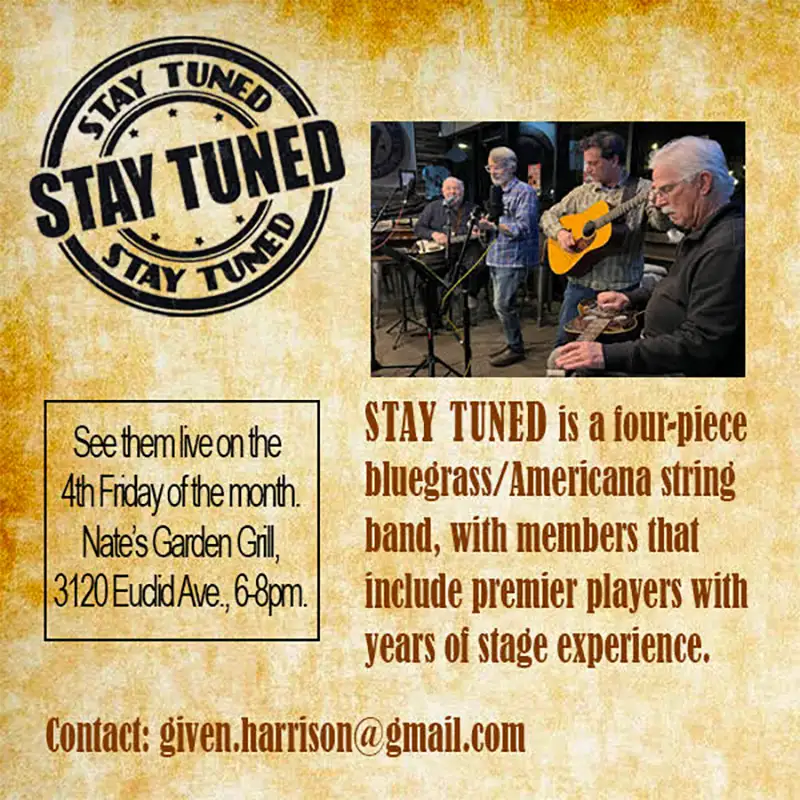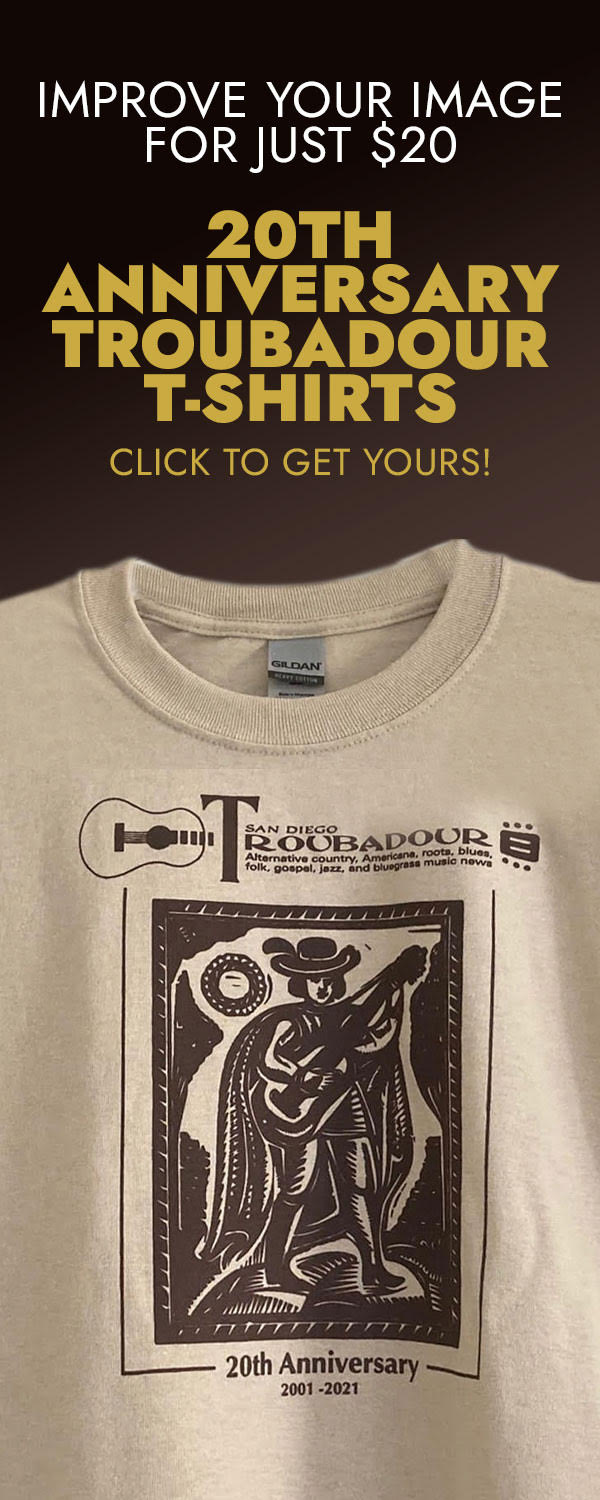Smoke Signals
Recording Matters, Part 6: Recording and Editing Vocals!
Hi! My name is Jeff Berkley and I’m from San Diego, California. I am a musician, songwriter, engineer, and producer. I spend four or five days a week producing records at Satellite studio here in San Diego. I’ve made lots and lots of them. I’m very lucky to be able to find magic in all sorts of different types of musical situations, levels, styles, and vibes. Somehow, I can focus on what’s authentic and draw it out. I have no idea how I got here but, I sure did luck out!This is part six of my attempt to somehow articulate my own recording method to you. As I’ve said before, it’s just my method. It works for me. It seems to work for others as well.
So far, we’ve chosen, written, or co-written, edited, and “memo demo’d” the songs. We’ve chosen a producer and studio. We’ve talked about choosing and preparing the musicians, and the last column we talked about recording basic tracks and editing them. Last month we talked about editing basic tracks and the instrument overdub process. This month it’s time to record and edit vocals!
Well, here we are, it’s finally here. The day you’ve both been looking forward to and dreading all at the same time! Vocal recording!
Recrding lead vocals can be terrifying. I mean it’s forever right!? Well, rest assured that you will always have the chance to get it right before you put it out into the universe for all eternity. I think a little bit of excitement and fear can be good for an artist. It’s sort of that feeling you get when you’re in line for a roller coaster ride. I mean, your body thinks you might die but as soon as it’s over, you want to do it again! That’s lead vocals. Impending vocal sessions can cause all sorts of craziness. I’ve seen folks get sick because vocal day was coming up. Our bodies are funny. Sometimes not so funny at all.
Of course there’s no answer to how to manage that. I have different kinds of conversations with my clients, depending on the person, and how often they may have sung in the studio. It’s different for everybody and the truth is the more you record vocals, the more confident and comfortable you’ll become. Until then, just know that it’s okay to be scared and I would advise you to use it in your favor.
Preparation erases fear.
Drink lots of water during the week before and practice the songs. Drinking water is important. Not just to keep your throat from drying out but hydrating your body is really good for the voice. It’s good for everything. We should all be drinking more water.
Also, don’t push your voice too hard beforehand. Just relax and know that you sing all the time, and this is no different. There’s just an expensive mic in front of your face.
Nowadays, it’s much easier to just sing the songs from top to bottom a bunch of times. You’ll know whether you’ve gotten certain sections or not and just keep going until you feel like you’ve gotten everything recorded. Record every take.
There are some things that can really help vocal sessions. Number one is that they aren’t very long. I prefer to do several two or three-hour vocal sessions for a full record. This gives us several different days to choose as well as not pushing the vocalist too hard. You’d be surprised, but in two hours you can sing through each song three or four times. If you do that on multiple days, you should have tons of great takes to choose from.
I mentioned hydration. I’m saying it again because it is that important. Water, water, water! Not just the day of but for the week or weeks before. If you’re a singer, just get into the habit of drinking lots of water all the time. You producers can help your clients from the minute the record starts by telling them to drink water.
I think the vibe of the studio really comes into play during vocal sessions. It’s an unbelievably emotional and spiritual experience to bare your soul on tape. This is probably too much information, but there are several times I’ve broken down in the middle of takes, during very personal songs. I probably have several takes of my ugly snot, crying on tape, and that’s okay. That’s the stuff. That’s what people respond to when the vocalist is really nailing it, mind, body, and soul.
I try to create a really vibey space for the vocalist. Lighting and tapestries and whatever kind of cool stuff you can think of is great. Obviously, you don’t want things that create a bad tone, but make sure the vocalist feels surrounded by vibe. It will translate, I promise.
The vocal space should be fairly non-reflective but not totally dark. A lot of folks put their singers in a closet with lots of packing blankets or clothes or fabric kind of things around. You really do have to strike a balance between reflective surfaces, and non-reflective surfaces, so you don’t end up with really dark and dead vocals or the opposite, such as having the vocals sound like they’re bouncing off plaster.
Which vocal mic is best? I’ve gotten great vocal takes with all sorts of different mics from SM 58s all the way to C12s and M49s. Good vocal tone can be had in all sorts of wonderful and inexpensive ways. It’s really still all about the passion, vibe, and song. Don’t believe me? Listen to a Bob Dylan record. Put on a black flag record sometime. Listen to “Nebraska” by Bruce Springsteen. That one was recorded on a cassette in his home. It’s just simply about passion and soul!
Personally, I don’t like to start and stop my vocalist a bunch of times. If I can keep them in the song from beginning to end, so that they stay within the dynamic arc of the song, I can go back later and weed out any mistakes. Usually, my vocalist sings the song anywhere between three and 20 times. It just depends on how they feel and which sections we agree they’ve gotten and haven’t gotten yet.
There are lots of things a producer or engineer can say to a vocalist that could ruin everything! Be very sensitive and empathetic to everything. Do not think of yourself for one second. Put yourself in the shoes of the vocalist and help facilitate what’s needed to get them into that space where they can create and wield magic. You want them to feel as comfortable as they do in their own bedroom, at home, when they’re singing the song for the very first time and it feels like the best song they’ve ever written in their lives! You want them to feel like a rock God in that booth! It isn’t about you at all, so just get the hell out of the way!
That being said, a few words of encouragement or little pointers on where a breath mark might be or even stuff about rhythm or whatever you feel can be talked about without killing the vocalist’s spirit. I guess we are walking on eggshells a bit, but there’s a way to do that that also serves the client. Subjects can be talked about without causing any insecurity. A lot of times the vocalist just wants to know that they’re not taking way longer than everybody else does. So very often I will preface my suggestions with “this happens all the time and something that could help and has helped others in the past is…”
Everyone has their own style, and you’ll figure out a way to navigate these difficult waters.
If you’re recording on several different days, do try and use the exact same set up if possible. You’re gonna wanna be able to edit between the takes recorded on different days so make sure your levels are close enough from day to day to be able to tweak into place.
Give that vocalist your undivided attention and listen to each take carefully. I personally am able to make mental notes on what sections or words or parts of the song they need to get still and ones that they’ve already nailed. Some folks write notes during the sessions so that they can go back and find specific things.
Personally, I do take notes during the session, but very often I like to listen to the takes later, once I’m not in the session and I can have fresh ears and perspective on each take. Sometimes when we’re in the recording moment, with the singer, we aren’t listening from a big picture standpoint, and it’s better to do that later if possible.
Essentially vocal recording is data collection. I guess all recording is data collection for that matter. You want to make sure and collect as much information as possible. In this case, you’re basically singing the song until the artist isn’t feeling it anymore. It’s just a natural tendency to feel the emotions of the song for a while and then we sort of move on. The amount of takes before this happens is different for every singer. It actually changes from song to song. Some singers can stay in it longer for certain songs and shorter for others. It’s just case by case.
We haven’t really talked about getting vocal tones yet, but really there’s just a few guidelines for that in my book. I like to use whichever mic sounds best on the singer. If you have several mics, do a vocal mic shoot out! That just means have the vocalist sing on all of your mics and you guys decide which ones you like best. Sometimes it’s the $10,000 one and sometimes it’s the $500 one. If one sounds best, use that one. Don’t get hung up on the price.
Once I’ve chosen the mic, I will choose a compressor. Having a little bit of compression on the vocal mic can really help the vocalist lean into those moments of high velocity. That just means that when they sing loud, the compressor will keep the levels in check.
Adjusting the mic and compression threshold and attack is vital. You really don’t want to feel the compressor here. You just want to feel the vocal without having it overload on really loud parts. That said, there are all sorts of times when leaning into a compressor’s sound is the desired tone. I like to use an LA2A on vocals. It’s really a beautifully transparent and optical compressor that breathes with the vocalist rather than stifling them. 1176s are wonderful as well, but they are a little more heavy-handed, so I use them more for heavy rock and vocals with a really high transient value. That means loud. Sometimes, I manipulate the compressor in the middle of the song by lowering the threshold or raising the threshold for certain parts. That’s very rare, though. I’ve had a couple of vocalists who go from a whisper to a scream and that takes some live adjustment sometimes. That can be really fun! Not everybody has those types of compressors around, but any kind of optical or FET compressor can be pretty cool!
The vocalist will feel their voice sound like a record in the headphones.
Oh, the headphones!
I’m not sure that I can overstate this, but the headphones are extremely important. They should sound beautiful and make the vocalist want to sing. No distortion or buzz or static to the sound. Try not to make any really loud noises that hurt ears or steal the vibe. Again, put yourself in the vocalist shoes and give them the best experience they’ve ever had!
Okay, so you recorded several beautiful pics of vocals over several sessions and now you’ve got a bunch of vocal data to sift through and edit.
The idea is to listen to every moment of every vocal take and choose all the best moments based on the song, how the vocal interacts with the instruments, vibe, and technical stuff. We create a composite vocal of all the best moments of each syllable of every vocal on the record.
Personally, I listen to each take a section at a time and even whittle it down even to a syllable at a time when needed. Usually, I end up with several bits of several takes in each section. There’s an art to this, and it takes time to learn how to create a good sounding, authentic feeling, composite vocal take.
There are all sorts of tools to use, including tuning software, more EQ, and compressors, as well as reverbs and delay. As long as you’ve collected enough data, you should be able to make your vocalist sound like a golden God of rock ‘n’ roll!
Comping vocals is very time-consuming. As I mentioned above one can spend hours just listening through each take and deciding what works best.
This is your job as a producer. These are the moments that create the magic just as much as when the band is all playing together. Try to be moved by the force when you’re doing this, and don’t get bored or complacent. If you do, get up and walk around. “There is only do, there is no try.” —Yoda
Personally, I like to do the first draft of the vocal comp on my own. The first draft is just meant to get the vocal to a place where we can talk about it and start to tweak it in with the vocalist’s help.
I will make a version one and send a rough mix of the song or songs to the vocalist, so that they can sift through what edits I’ve made and listen on their own, in their own space.
After a few days, I’ll usually get a list of things the vocalist would like me to look for. Maybe they didn’t say an “S” the way they wanted, or they don’t like the way they pronounce a certain word or said the wrong words in the take I chose, or all sorts of things could be taken care of at this stage.
Once I’ve gone through and made all the tweaks I possibly can make for the client I will create a version two rough mix for them to listen. Usually, they’ll hear even more at this point, and I’ll edit and make a version three. At that point we’re pretty close, but there are almost always more vocal tweaks once we do the final mix. Somethings just don’t become illuminated until the mix is complete. You’ll probably be editing vocals all the way to the end of the project. I’ve edited vocals once the project got to to the mastering stage. It’s just a very, very important part of the process and like I said before, it’s forever.
We all have the chance to make the most of every minute, and this is one of those moments. You can do it! Remember to sing from your heart and picture the audience in your head. Really see and feel that audience and then make them believe what you’re singing.
These recordings become the soundtrack of people’s lives. They help people feel joy and work through sadness. They mark milestones in our lives and give sound to feelings. Recording music creates a legacy of art, soul, and heart. A legacy of love.
Recording matters!
Next month we record and edit backing vocals!
Jeff Berkley
619-957-3111
www.jeffberkley.com








